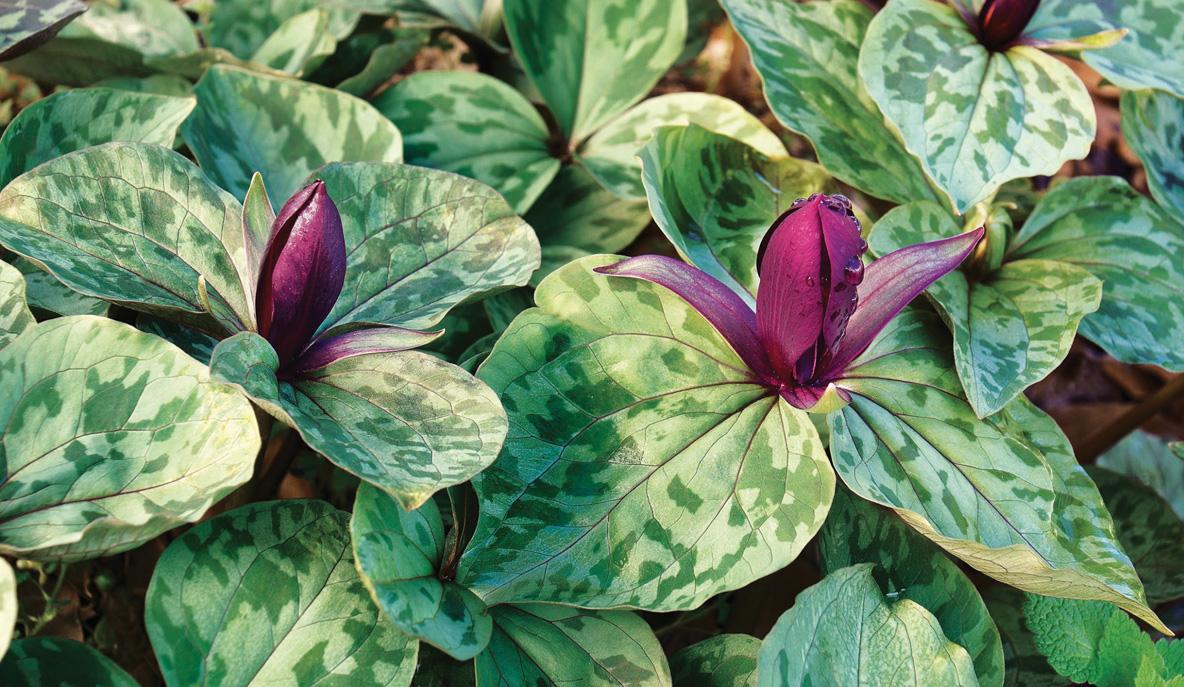
THERE is an air of mystery about the trillium. It’s a curious plant, native to remote areas of North America and has traditionally been used as a healing remedy by indigenous cultures. The early spring blooms are glamorous and unusual, framed by a trio of large and beautifully ornamental leaves, often with gorgeous but subtle marbled variegations.
However, trilliums are also notoriously tricky and take a long time to establish, which explains why they aren’t widely available in garden centres and nurseries, and, when you do find them, they are quite expensive plants.
Sold as pot-grown specimens
Trilliums are part of the lily family and are also known as the wake robin, wood lily and trinity flower. Although they are rhizomatous perennials that grow from corms, it’s not a simple job of planting them in autumn like traditional spring-flowering bulbs. Most are pot-grown specimens sold for planting in the green.
They are tricky to propagate as clumps can only be divided after a few years and they take seven or eight years to flower from seed. But don’t write trilliums off as fussy plants. If you want to establish a true woodland corner, with conditions that mimic a forest floor, then trilliums are a perfect match.
Richard Brown, senior horticulturist in the Rock and Woodland Garden at the Royal Botanic Gardens Edinburgh (RBGE) says, “There are so many different types and variations in colours and leaves and sizes, so depending on the size of your plot, any garden, with the right conditions, would suit trilliums.”
This story is from the {{IssueName}} edition of {{MagazineName}}.
Start your 7-day Magzter GOLD free trial to access thousands of curated premium stories, and 9,000+ magazines and newspapers.
Already a subscriber ? Sign In
This story is from the {{IssueName}} edition of {{MagazineName}}.
Start your 7-day Magzter GOLD free trial to access thousands of curated premium stories, and 9,000+ magazines and newspapers.
Already a subscriber? Sign In

To dig or not to dig?
Should we be carrying out a full dig on plots now? Bob considers the pros and cons of the 'autumn dig' debate

The box ball blues
As if his beleaguered box hadn't already taken a beating, Toby now has to deal with some hungry box caterpillars

Save your own seeds
Masterclass on: seed saving

Strange sightings
Three unusual insects turn up in Val's garden in one day

A bolt from the blue!
Cornflowers are perfect for garden and vase

Winter moth prevention
Ruth shows you how to avoid maggoty tree fruits

Create a winter container
There are as many options as in summer

Lightweight gardening tools
AS well as being good for our mental health, gardening is also great exercise.

Autumn price round-up
AG finds better bargains in lesser-known brands

Rudbeckias
Rudbeckias are ideal for sunny summer patios and borders, with some able to survive our coldest winters